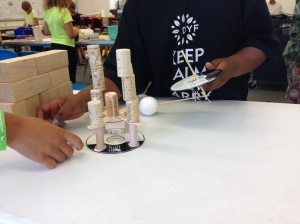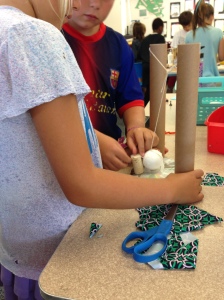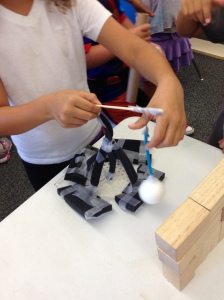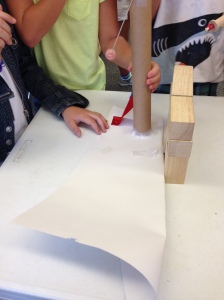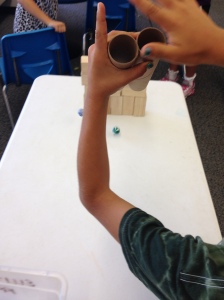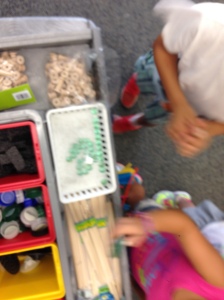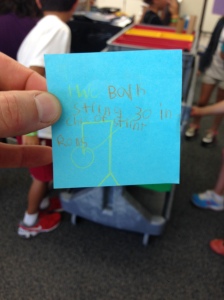This has been a crazy, amazing, exhausting and exciting year, and it's only been 70+ days! My kids and I began the year working on Genius Hour projects, feverishly polishing up research and getting presentations ready. It was good and it was how I envisioned the beginning of my year. However, I knew it wasn't going to stay the same for long. What if there were tools and wood scraps? What about a hand saw? What if there was tape, cardboard, MakeDo Kits, tubes and marble run walls? And, what if this was all tied together with Design Thinking? What if Genius Hour was really Maker Time in room 26?
The Start
Getting the kids amped about working independently on a project of their choosing was more difficult than I thought. I jumped from 1st grade to 3rd grade and the difference was noticeable. After some work thinking big with a WonderWall (huge thanks to @bertoson81 for the inspiration) the kids started to get that when I said, "Go forth and learn about anything" I meant Anything. Like all Genius Hour's, some were great, like a perfect cup of coffee in the morning. Others, were not so good (gas station coffee?). Guiding 3rd graders through a less than structured learning process is hard work, but can be done when high standards and expectations, mini-lessons and check-in meetings are put into place.
Starting to Change
"If you don't like change, you're going to like irrelevance even less."
—General Eric Shinseki, former U.S. Army Chief of Staff
We started with the Design Thinking approach and made some Maker Journals to start. Then the kids started getting into cardboard prototyping (cheap and fast model that functions). We crushed tape- it was ridiculous. (We got Make Do kits and life has been better ever since).
 We made a lot. There were planes, a stool, a chair, wrecking machines, boats, stuffed animal houses. The room was messy, but learning was taking place in each nook and cranny. (How did I know? This blog will have to be next up.)
We made a lot. There were planes, a stool, a chair, wrecking machines, boats, stuffed animal houses. The room was messy, but learning was taking place in each nook and cranny. (How did I know? This blog will have to be next up.)
The Big Shift
About a month ago I had the privlege of visiting the The Cove School to see what we might want to copy/steal as we move forward with a bond. (Watch a video about the school here). While there, I learned about the Making they are trying to implement with their students. Tinker. Make. Do. While Tinkering, students are playing with materials, experiencing and experimenting with motion and force, adhesion, overall design or aesthetics. When Making, students are actually creating something. This can be a prototype, or an actual functioning thing. Do- this is where I'm a little foggy, so I just made this up with my students to fit our needs and classroom culture. If you are Doing, you are focused on a big project, perhaps writing a play, researching Ice Cream (back to Genius Hour) or how planes fly. For me, this was a big "ah ha". I can offer my students a developmentally appropriate Maker time that includes hands on learning, collaborative problem solving, highly engaging work that each student chose to tackle, very rigorous standards of completion and high expectations.
| This Scooter rack filled a need at our school. Created by students. Note the prototype in green. Fully functioning as I write this. |
Making the Maker Ed program for a classroom or school is never really done. The iterative step in Design Thinking allows for testing and retesting, always looking for a better way to learn, teach and think. I leave school most days thinking about change in big and small ways, searching for new ways to engage students and create more and more learning opportunities. Putting Maker Ed and Genius Hour together seems to work, so I suppose that won't change for now.


